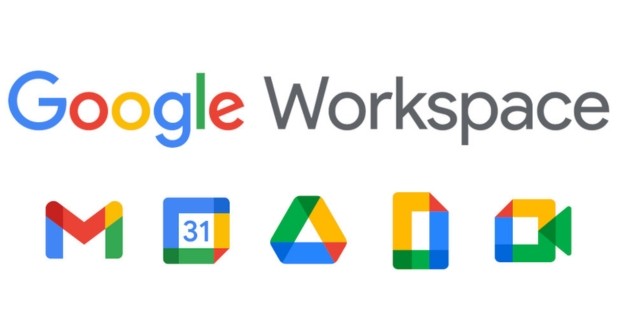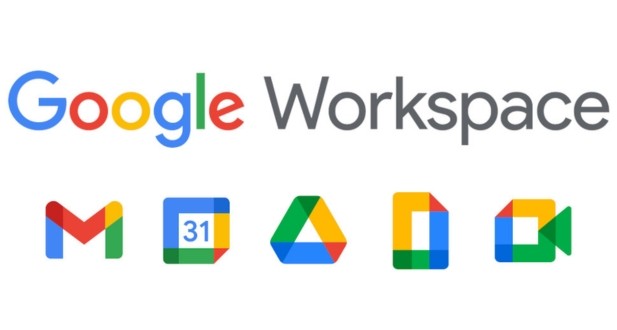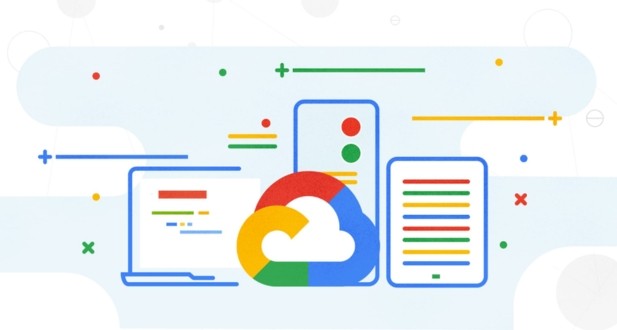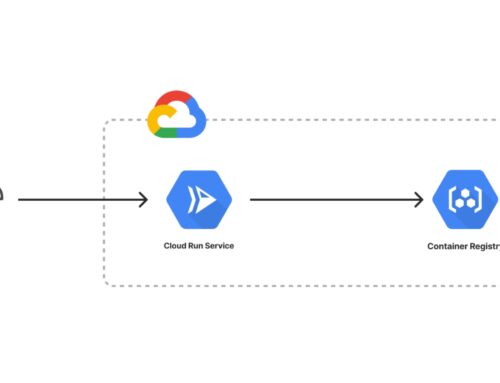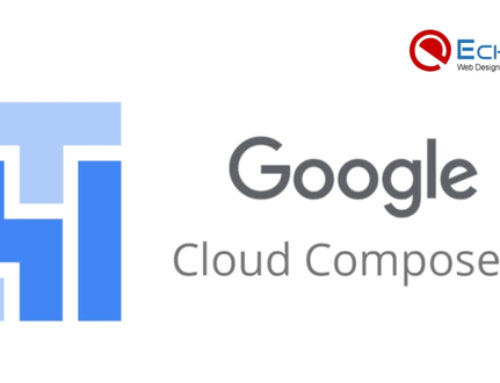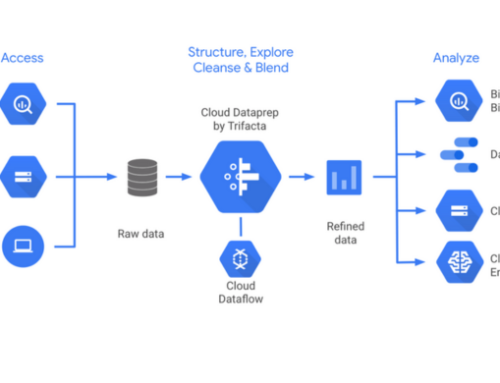Introduction:
In the ever-evolving landscape of digital business operations, effective collaboration is the cornerstone of success. As organizations strive to streamline workflows and enhance productivity, many are turning to comprehensive solutions like Google Workspace to transform the way teams work together. This article delves into the intricacies of Google Workspace implementation services, exploring the benefits, challenges, and best practices for a seamless transition.
Understanding Google Workspace
What is Google Workspace?
Formerly known as G Suite, Google Workspace is a suite of cloud-based productivity tools that facilitate seamless communication and collaboration within organizations. The suite includes popular applications such as Gmail, Google Drive, Google Docs, Google Sheets, Google Slides, and more. Google Workspace is designed to break down silos, enabling teams to work together in real-time, regardless of their physical location.
Key Components of Google Workspace
- Gmail:
Description: Gmail is a feature-rich email platform that provides a secure and reliable means of communication. It offers advanced features such as customizable filters, labels, and powerful search capabilities, making it a robust tool for managing emails.
- Google Drive:
Description: Google Drive is a cloud storage service that allows users to store, share, and collaborate on documents, spreadsheets, presentations, and more. It provides a centralized location for files that can be accessed from anywhere with an internet connection.
- Google Docs, Sheets, and Slides:
Description: These are online document editing and creation tools that are part of the Google Workspace suite.
Google Docs: Used for creating and editing text documents.
Google Sheets: A spreadsheet tool for data analysis and collaboration.
Google Slides: Presentation software for creating slideshows and collaborative presentations.
- Google Meet:
Description: Google Meet is a video conferencing platform that enables virtual meetings and collaboration. It supports features like screen sharing, real-time captions, and integration with other Google Workspace apps. It’s designed to facilitate remote communication and collaboration among team members.
- Google Calendar:
Description: Google Calendar is a comprehensive scheduling tool that allows individuals and teams to organize and manage events, meetings, and appointments. It integrates seamlessly with other Google Workspace apps, making it easy to schedule and join virtual meetings, set reminders, and share calendars with colleagues.
Benefits of Google Workspace Implementation
In today’s dynamic business landscape, organizations are constantly seeking ways to enhance productivity, streamline operations, and foster seamless collaboration among their teams. Google Workspace Implementation stands out as a transformative solution that empowers businesses to achieve these goals and elevate their overall performance.
- Unleashing Productivity Power:
Google Workspace Implementation empowers businesses to tap into a suite of productivity-enhancing tools that streamline workflows, automate repetitive tasks, and enable real-time collaboration. With Google Docs, Sheets, and Slides, teams can work on documents, spreadsheets, and presentations simultaneously, providing input and making edits in real-time. This collaborative approach eliminates version conflicts, streamlines communication, and accelerates project completion.
- Streamlined Operations and Reduced Costs:
Google Workspace Implementation eliminates the need for on-premise infrastructure and software maintenance, significantly reducing IT costs. Businesses no longer need to invest in hardware, software licenses, or ongoing maintenance fees. Google’s cloud-based infrastructure ensures that data is securely stored and accessible from anywhere, anytime, on any device. This flexibility empowers employees to work remotely or on the go, further enhancing productivity and reducing overhead expenses.
- Enhanced Collaboration and Communication:
Google Workspace Implementation fosters a culture of seamless collaboration and communication among teams. With Google Chat, teams can engage in instant messaging, share files, and discuss projects in real-time, breaking down communication barriers and expediting problem-solving. Google Meet facilitates video conferencing, allowing teams to connect face-to-face, regardless of their location, fostering a sense of connection and shared purpose.
- Empowering Employees and Enhancing Satisfaction:
Google Workspace Implementation empowers employees with the tools they need to succeed, boosting their morale and job satisfaction. The intuitive and user-friendly interface of Google Workspace applications makes it easy for employees to adapt and embrace new technologies, enhancing their productivity and overall contribution to the organization.
- Unveiling the Frictionless Future of Work:
Google Workspace Implementation paves the way for a frictionless future of work, where adaptability, collaboration, and efficiency reign supreme. With its cloud-based infrastructure, real-time collaboration tools, and comprehensive suite of applications, Google Workspace empowers businesses to overcome geographical barriers, streamline operations, and achieve their full potential.
- Enhanced Collaboration
Google Workspace significantly enhances collaboration within teams by allowing multiple users to work on the same document simultaneously. This real-time collaboration feature eliminates the need for version control and accelerates project timelines. Users can edit, comment, and communicate within documents, spreadsheets, and presentations in a seamless manner, fostering a culture of teamwork and productivity.
- Seamless Communication
Integrated communication tools such as Gmail and Google Meet facilitate efficient and effective communication. Gmail provides a reliable email platform, while Google Meet offers video conferencing capabilities, enabling teams to connect face-to-face regardless of their physical locations. Shared calendars further enhance coordination, making it easier for team members to schedule meetings and stay informed about each other’s availability.
- Centralized Information Management
Google Drive serves as a centralized repository for storing and sharing documents, fostering easy information access and collaboration. This centralized approach reduces the risk of version control issues, as everyone has access to the latest version of documents. With features like file sharing and access controls, organizations can manage information securely while ensuring that team members can quickly locate and collaborate on the documents they need.
- Scalability and Flexibility
One of the notable advantages of Google Workspace is its scalability, making it suitable for organizations of all sizes. As businesses grow, they can seamlessly adapt and expand their usage of Google Workspace to meet evolving needs. The platform’s flexibility allows organizations to add or remove users, adjust storage requirements, and customize their Google Workspace environment to align with changing business requirements. This scalability and flexibility contribute to the long-term viability of Google Workspace as a solution for diverse organizational needs.
Challenges in Google Workspace Implementation
Change Management:
- Cultural Shift: Implementing Google Workspace often requires a significant cultural shift within an organization. Employees may be accustomed to existing tools and workflows, and introducing a new suite of applications can meet with resistance.
- Employee Resistance: Resistance to change is a common challenge. Employees might feel comfortable with their current tools and may be apprehensive about learning and adopting new ones. Effective change management strategies are crucial to address these concerns, communicate the benefits of the transition, and ensure a smooth adaptation to the new way of working.
- Communication and Leadership: Clear communication from leadership about the reasons for the change and the benefits of Google Workspace is vital. Strong leadership support can help build confidence among employees and encourage a more positive attitude towards the transition.
Data Migration:
- Complex Process: Migrating existing data to Google Workspace can be a complex process. Organizations often have large volumes of data stored in various formats and locations. Ensuring a seamless transition while maintaining data integrity and security requires careful planning and execution.
- Data Mapping and Cleanup: Properly mapping data from legacy systems to Google Workspace applications is crucial. Data cleanup activities, including deduplication and ensuring data quality, are often necessary to prevent issues during migration.
- Security Concerns: During migration, there can be concerns related to the security of sensitive data. Ensuring that data is protected during the transfer and that access controls are properly configured in the new environment is essential.
Training and Adoption:
- User Training: Google Workspace comes with a variety of applications, and employees need to be adequately trained to use them efficiently. Training programs should cover not only the basic functionalities but also advanced features that can enhance productivity.
- Customized Training Plans: Different departments and roles within an organization may have unique use cases for Google Workspace. Implementing customized training plans that cater to the specific needs of different user groups is essential for effective adoption.
- User Support: Providing ongoing support and resources for users as they navigate the new tools is critical. This could include helpdesk support, documentation, and a community for users to share tips and best practices.
- Monitoring Adoption Metrics: Organizations should continuously monitor adoption metrics to identify areas that may need additional training or support. This feedback loop is crucial for refining training programs and ensuring that employees are making the most of the Google Workspace tools.
Best Practices for Google Workspace Implementation
Conduct a Thorough Needs Assessment:
- Understanding Organizational Requirements: Begin by assessing the unique needs and objectives of the organization. Identify key stakeholders and gather input to ensure that the chosen Google Workspace components align with the organization’s goals.
- User Requirements: Consider the needs of different user groups within the organization. Identify power users, department-specific requirements, and any special considerations to tailor the implementation accordingly.
Develop a Robust Change Management Plan:
- Communication Strategies: Communicate the benefits of Google Workspace to employees, addressing any concerns they may have. Clearly outline the reasons for the transition and how it aligns with organizational objectives.
- Training Programs: Develop comprehensive training programs that cater to users at various levels of familiarity with the tools. Include hands-on training sessions, online resources, and workshops to help users adapt to the new system.
- Ongoing Support Mechanisms: Establish support channels, such as help desks, forums, or dedicated support personnel, to address user queries and issues during and after the implementation. Continuous support is crucial for sustaining user adoption.
Data Migration Strategy:
- Categorizing Data: Classify data based on its importance, sensitivity, and relevance to daily operations. This categorization guides the prioritization of data migration and ensures critical information is seamlessly transitioned.
- Mapping Dependencies: Identify dependencies between different data sets and applications. This ensures that interconnected systems continue to function smoothly after the migration, minimizing disruptions to workflow.
- Testing Migration Processes: Conduct thorough testing of the data migration process in a controlled environment before the actual implementation. This helps identify and address any issues, reducing the risk of data loss or corruption.
User Training and Support:
- Investment in Training: Allocate resources for comprehensive user training programs. This investment pays off in increased user proficiency, productivity, and a smoother transition overall.
- Providing Resources: Offer a repository of training materials, FAQs, and user guides. This serves as a reference for users and reinforces the training they receive, enabling them to explore and utilize Google Workspace features more effectively.
Security and Compliance:
- Configuring Security Settings: Ensure that security settings within Google Workspace are configured according to organizational policies. This includes access controls, encryption, and other security features to safeguard sensitive information.
- Compliance with Regulations: Understand and adhere to industry-specific regulations and compliance standards. This is particularly important for organizations in sectors such as healthcare, finance, or legal, where data protection and regulatory compliance are critical. Regularly audit and update security measures to stay in line with evolving regulations.
Google Workspace Implementation Services
Overview of Implementation Services
Google Workspace implementation services are delivered by certified professionals and consultants who specialize in deploying and configuring the suite for organizations. These services cover various phases, including planning, deployment, customization, and ongoing support.
Planning and Assessment
Experienced consultants initiate the implementation process by conducting a detailed analysis of the organization’s existing infrastructure, workflows, and collaboration needs. This assessment serves as the foundation for creating a tailored implementation plan that aligns with the organization’s goals and requirements.
Deployment and Configuration
During the deployment phase, the implementation team sets up Google Workspace based on the organization’s specifications. This includes activities such as user provisioning, data migration from existing systems, and configuring security settings to meet industry standards. The goal is to ensure a smooth transition to the new platform without disrupting daily operations.
Customization and Integration
Google Workspace implementation services may include customization of the suite to address specific organizational needs. This could involve tailoring settings, templates, and features to enhance user experience. Integration with other existing systems, such as customer relationship management (CRM) software or project management tools, may also be part of the process to create a more cohesive and streamlined workflow.
Training and Adoption Support
To facilitate successful adoption, implementation services often include comprehensive training programs for employees. These training initiatives may consist of on-site or remote training sessions, the provision of training materials, and ongoing support resources. The aim is to empower users with the knowledge and skills needed to leverage Google Workspace effectively in their day-to-day tasks.
Ongoing Support and Optimization
Post-implementation, ongoing support is critical for addressing any issues, optimizing workflows, and ensuring that the organization continues to derive maximum value from Google Workspace. This support may involve regular check-ins, troubleshooting assistance, and updates to accommodate evolving business needs. Continuous optimization efforts help the organization stay current with the latest features and best practices, maximizing the long-term benefits of Google Workspace.
Successful Google Workspace Implementations
Small Business Efficiency:
A small marketing agency streamlined its operations using Google Workspace. The team utilized Google Drive for seamless document collaboration, Gmail for efficient communication, and Google Calendar for scheduling. This resulted in improved project management, enhanced team collaboration, and increased overall productivity.
Enterprise Collaboration:
A multinational corporation with offices worldwide adopted Google Workspace to enhance collaboration across geographically dispersed teams. With tools like Google Meet, Drive, and Docs, employees could collaborate in real-time, leading to faster decision-making and a more agile workflow. The company reported increased efficiency and reduced communication barriers.
Education Transformation:
A school district implemented Google Workspace for Education to modernize its learning environment. Teachers and students used Google Classroom, Docs, and Sheets for interactive and collaborative learning experiences. The school district saw improved engagement, better resource sharing, and simplified communication between educators, students, and parents.
Healthcare Communication:
A healthcare organization adopted Google Workspace to enhance communication and collaboration among its healthcare professionals. Google Meet facilitated virtual consultations, while Google Drive securely stored patient records and documents. The organization reported improved efficiency in communication, leading to better patient care and streamlined administrative processes.
Nonprofit Collaboration:
A nonprofit organization implemented Google Workspace to improve collaboration among its global teams and volunteers. Google Workspace’s cloud-based solutions allowed for seamless communication and document sharing, fostering better coordination on projects. The organization reported cost savings, increased productivity, and a more unified approach to its mission.
Key Considerations Before Implementation
Vendor Support and Service Level Agreements: Evaluate the support services provided by Google for Workspace implementation. Understand the service level agreements (SLAs) and support channels available to address any issues that may arise during and after the implementation process.
Pilot Testing: Before a full-scale deployment, consider conducting a pilot test with a small group of users. This allows organizations to identify potential challenges, gather feedback, and make necessary adjustments before rolling out Google Workspace to the entire organization.
Scalability: Consider the scalability of Google Workspace to accommodate the organization’s growth. Ensure that the chosen plan can easily scale as the number of users and data within the organization expands.
Backup and Recovery: Implement a robust backup and recovery strategy to safeguard critical data. While Google Workspace provides certain built-in recovery features, organizations should also explore third-party backup solutions for an extra layer of protection.
Communication Plan: Develop a clear communication plan to inform employees about the upcoming transition to Google Workspace. Clearly articulate the benefits of the new platform and address any concerns or questions they may have.
Testing and Quality Assurance: Perform thorough testing of Google Workspace features and integrations to identify and resolve any issues before full deployment. Quality assurance ensures a smoother transition and minimizes disruptions to daily operations.
Budget and Total Cost of Ownership: Evaluate the budget for Google Workspace implementation, considering licensing costs, training expenses, and any potential additional costs associated with customization or third-party integrations. Calculate the total cost of ownership over time to make informed financial decisions.
By carefully considering these factors, organizations can lay the groundwork for a successful Google Workspace implementation, ensuring a seamless transition and maximizing the benefits of the collaborative platform.
Conclusion
As organizations continue to navigate the complexities of modern business, the implementation of tools like Google Workspace has become instrumental in fostering collaboration, enhancing communication, and driving productivity. While challenges exist, the strategic deployment of Google Workspace, coupled with effective implementation services, can pave the way for a more connected and efficient work environment.
In conclusion, the journey towards Google Workspace implementation is a transformative process that requires careful planning, thorough assessment, and ongoing support. By embracing the potential of Google Workspace and leveraging the expertise of implementation services, organizations can position themselves at the forefront of collaborative innovation in the digital age.
Migration tools provided by Google or third-party services can be used to transfer emails, contacts, and calendars to Google Workspace.
Yes, you can integrate Google Workspace with your existing domain to use professional email addresses.
Google Workspace includes security features like two-factor authentication, encryption, and advanced threat detection to safeguard data.
Google Workspace data is automatically backed up and can be restored using built-in recovery tools.
Yes, you can customize the interface, including logos and branding, to match your organization’s identity.
Google offers documentation, guides, and customer support to assist with the implementation process.
Yes, Google Workspace supports integration with a variety of third-party applications through the Google Workspace Marketplace.
Administrators can control user permissions and access levels, defining who can view, edit, or share specific documents and files.
Yes, Google provides training resources, and additional training services can be obtained for a smoother transition.
Google provides service level agreements (SLAs) with guaranteed uptime, and outage information is transparently communicated.
Yes, Google Workspace is designed for mobile access, and dedicated apps are available for various devices.
Google Workspace complies with industry standards and regulations, and it provides tools for data retention and compliance reporting.
Yes, migration tools and services are available to help organizations transition from other collaboration platforms to Google Workspace.
Google Workspace offers various storage plans, and administrators can manage storage quotas for users.
Communication in Google Workspace is encrypted, and secure protocols are used to protect data during transit.
Yes, you can manage multiple domains and domain aliases within a single Google Workspace account.
Google Workspace provides tools for monitoring usage, analyzing collaboration patterns, and generating reports on user activity.
Yes, Google Workspace is scalable and suitable for businesses of all sizes, offering plans tailored to the specific needs of small and large organizations.
